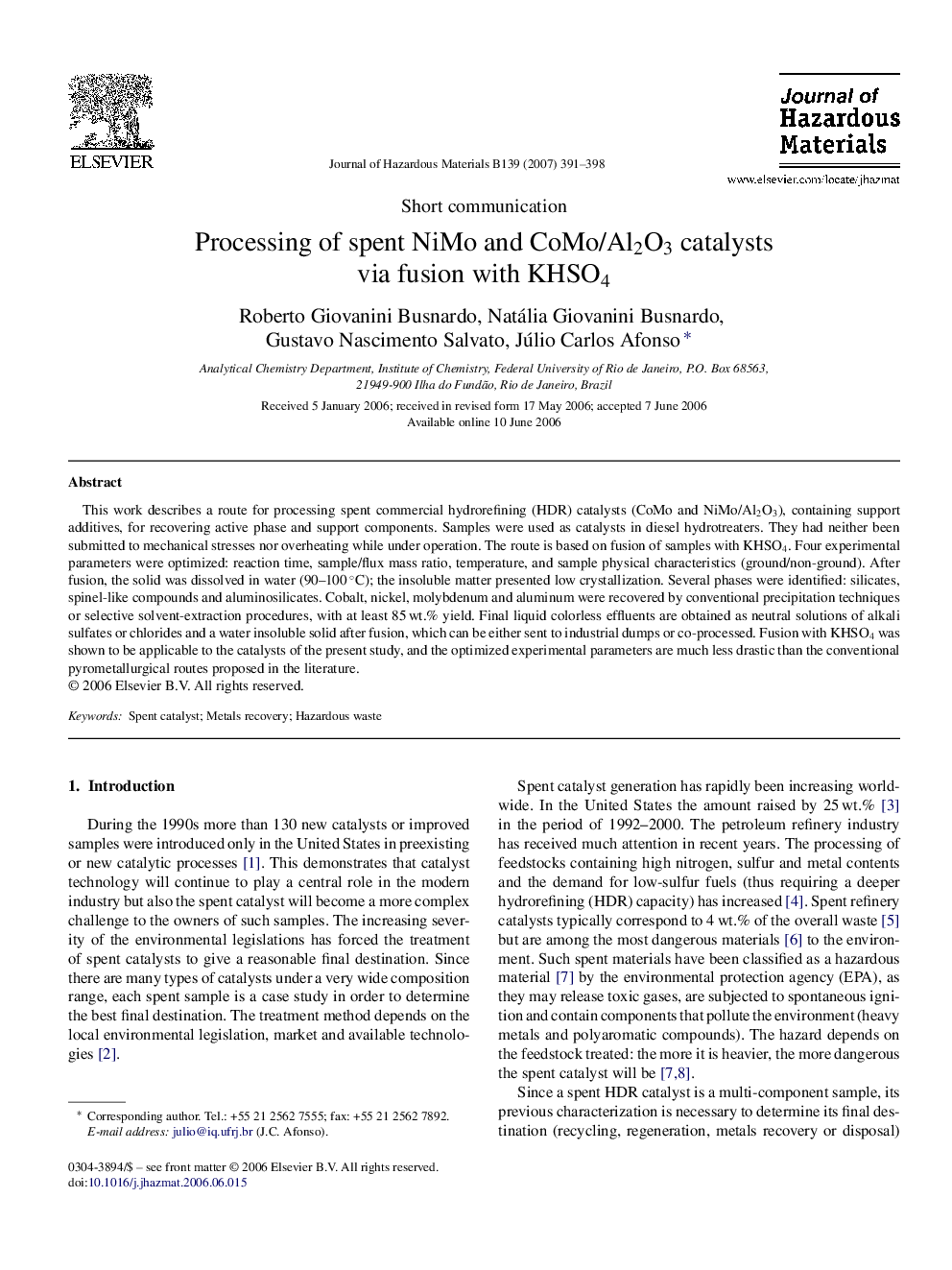| Article ID | Journal | Published Year | Pages | File Type |
|---|---|---|---|---|
| 584915 | Journal of Hazardous Materials | 2007 | 8 Pages |
Abstract
This work describes a route for processing spent commercial hydrorefining (HDR) catalysts (CoMo and NiMo/Al2O3), containing support additives, for recovering active phase and support components. Samples were used as catalysts in diesel hydrotreaters. They had neither been submitted to mechanical stresses nor overheating while under operation. The route is based on fusion of samples with KHSO4. Four experimental parameters were optimized: reaction time, sample/flux mass ratio, temperature, and sample physical characteristics (ground/non-ground). After fusion, the solid was dissolved in water (90-100 °C); the insoluble matter presented low crystallization. Several phases were identified: silicates, spinel-like compounds and aluminosilicates. Cobalt, nickel, molybdenum and aluminum were recovered by conventional precipitation techniques or selective solvent-extraction procedures, with at least 85 wt.% yield. Final liquid colorless effluents are obtained as neutral solutions of alkali sulfates or chlorides and a water insoluble solid after fusion, which can be either sent to industrial dumps or co-processed. Fusion with KHSO4 was shown to be applicable to the catalysts of the present study, and the optimized experimental parameters are much less drastic than the conventional pyrometallurgical routes proposed in the literature.
Related Topics
Physical Sciences and Engineering
Chemical Engineering
Chemical Health and Safety
Authors
Roberto Giovanini Busnardo, Natália Giovanini Busnardo, Gustavo Nascimento Salvato, Júlio Carlos Afonso,
